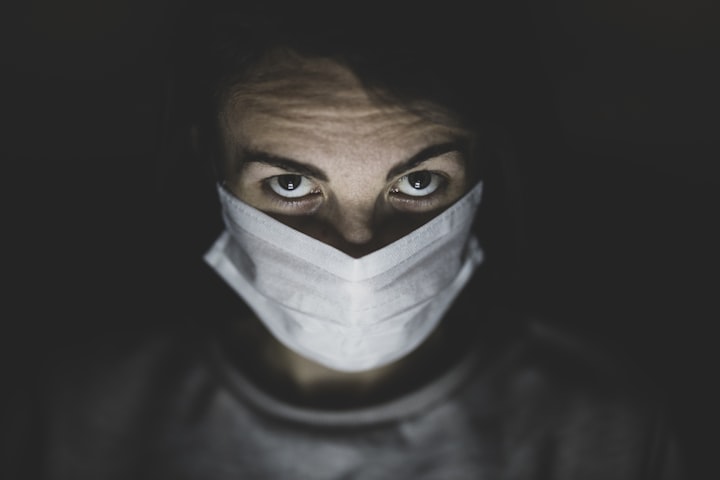
Back in March 2020, the air seemed to turn hostile all of a sudden, giving us a scare. Even now, a couple of years after the lockdown, it's strange to reflect on. We face off against unseen foes like viruses and bacteria every day, making us sniffle and sneeze through the colder months. While we rely on sprays and wipes to fight them, there's one potent weapon we've overlooked for decades—light.
Here's the light spectrum. You've probably seen it before, right here where visible light is—yeah, the same light we were talking about for disinfecting, that's ultraviolet light. There are actually three types of UV light, each at different wavelengths. The one coming from the sun mostly contains UVA and some UVB. Now, that UV light does all the things people expect it to do, so we can't shine it on people. It harms your skin, eyes, and can lead to cancer by messing with your cell's DNA. But ironically, those same traits that cause cancer also break down viruses and bacteria, stopping them from spreading. We've known this since the late 1800s.
Researchers have been testing out short wavelength UV, known as UVC, as a germ killer for many years. Back in the 1940s, they set up UV chambers in classrooms. Now, don't fret, the UV light was directed safely above the children, so they weren't directly exposed to it. As the air circulated, it got purified. They discovered that it worked well against the measles virus. Really well—less than 15% of kids in UV-equipped classrooms got infected, compared to over 55% in those without it.
Subsequent studies employed rodents to assess UV's impact on diseases like tuberculosis. They exposed the air to UV light beforehand, and the hamsters in the test group remained free of tuberculosis. However, these lights had to be positioned above people or hamsters and installed meticulously using an expensive method called Upper Room UV. Because even though they emit low wavelength light, it's not advisable to expose humans directly to it regularly, you know, because of the cancer risk.
This method is actually used in a lot of hospitals paired with ventilation to help reduce infection rates. But having UV at the top part of the room can't do much to stop the germs being spread between people. So more recently, researchers began looking for a better way to kill pathogens all around us. They ran studies to determine the most UV light that could be used to kill bacteria and viruses but also minimize harm to humans. Which brings us to a type of UVC called far UV.
Far UV has a very low wavelength that can't penetrate skin deeply enough to cause damage, even in mice specifically bred to be susceptible to cancer. This is a field full of tuberculosis hamsters and cancer mice, and I feel really bad about it. In test chambers, far UV is really effective at killing pathogens. This study is from 2020, when, well, you know what happened in 2020. It showed that far UV was able to kill 99% of coronaviruses in a test chamber, and this study found that it was 98% effective at reducing the bacteria that cause staff infections.
So why isn't it everywhere? In order to understand effectiveness, you first have to understand safety. Well, it's generally accepted that far UV won't give you cancer, there are other consequences to bringing UV light so close to the ground. We know really well that when you shine UV lights on air, it can cause chemistry to happen. UV light produces a molecule called ozone, which can be harmful for humans to breathe in. If you're exposed to lots of ozone, if you're exposed to lots of particles, then your risk for respiratory ailments goes up. But just how much of it is being produced by these lights in a real-world environment is still up in the air.
So, how can we utilize it? That's a UV light right there. Yup, it sure is. This one emits far UV light, mainly at 222 nm wavelength, which is proven to be highly effective in eliminating various things, from viruses and bacteria to mold allergens and more. PJ Piper heads Far UV Technologies, a company that designs UV devices. He predicts that far UV will be increasingly used alongside other protective measures.
"I don't see this as replacing HVAC or filtration. They're both important; they just serve different purposes. HVAC mainly controls climate, with a bonus of potentially reducing viral presence. Filtration, likewise, doesn't affect climate but is crucial for removing inorganic pollutants like smog or wildfire smoke. However, nothing comes close to light in efficiently wiping out pathogens present in a room."
Combining UV with other systems could also help cut down on pollutants. However, Barber and fellow researchers urge us to consider the cost-effectiveness. "The potential issue arises if people opt to install these lights instead of proper ventilation. While a hospital facing high infection risks could benefit, an average old school building might not."
It could take a while before far UV becomes commonplace. Considering the likelihood of future pandemics, it's more a matter of when than if. Therefore, having technologies like this is crucial. However, we need to be cautious not to overlook something significant in our excitement for this technology.
Listen, anyone promising a single cure for everything is probably stretching the truth. When it comes to battling diseases, whether it's the common cold or a widespread pandemic, there's no one-size-fits-all solution. We need a range of tools from vaccines to masks to disinfectants. And down the line, far UV might become another option, maybe in different forms we can carry with us or have installed above us without even noticing, adding an extra invisible shield against airborne threats.
If you're curious about UV light and germs, check out Unexplainable Vox's science podcast about unanswered questions. They're diving into everything we don't know about UV light and disease, including that daring experiment in 1937 where researchers chose kids as test subjects during a looming epidemic.
About the Creator
Mubarak
"Passionate about life's essence, enamored by history's mysteries, and intrigued by fascinating fun facts about reality. Join me on a journey of enlightenment and exploration






Comments
There are no comments for this story
Be the first to respond and start the conversation.